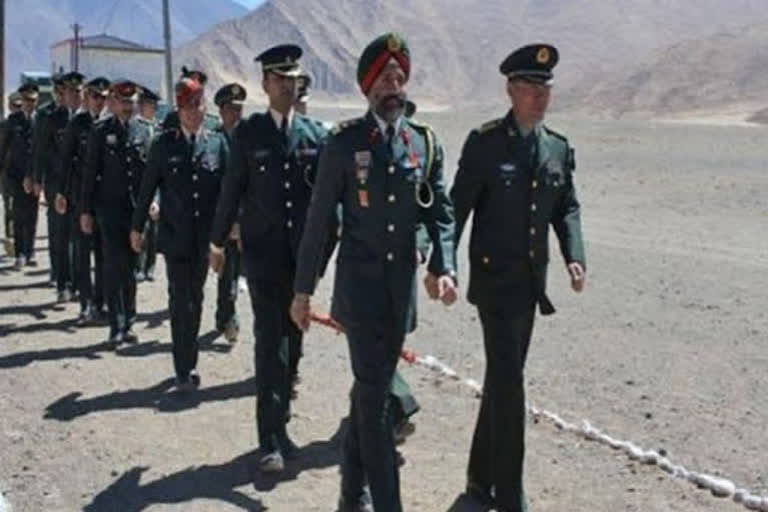New Delhi: With both the Indian Army and the Chinese PLA unmoving from their respective positions on the way ahead for the "disengagement and de-escalation process" (DDP), the next round of corps commander-level talks has been clouded with uncertainty, giving rise to speculation as to whether China actually wants a de-escalation to take place or is it just playing for time?
Indian army sources have told ETV Bharat that despite having tried their best to schedule the corps commander-level meeting for Thursday (today), concurrence could not be achieved with the PLA. "They simply refused to schedule a date," one of the sources said.
The bone of contention appears to be the Pangong lake faceoff.
"While the Chinese PLA is insistent to resolve the ongoing Pangong Tso faceoff first, the Indian army is keen to include all faceoff points on the agenda. And without agreeing on the basic common agenda for the meeting, the date cannot be decided," the source said.
Till now, four meetings at the corps commander level have taken place between India and China — June 6, June 22, June 30 and on July 14 at Chushul-Moldo on the Line of Actual Control (LAC).
Besides advantages of terrain which is largely flatter towards the Chinese side of the LAC, China is better prepared than India in terms of infrastructure, logistics, and equipment to face the onslaught of the brutal winter that east Ladakh faces.
Read: Not just territories, India-China clash may be for prospective east Ladakh oil, gas
In such a scenario, the financial cost of maintaining a huge number of soldiers along with the maintenance of their equipment may take a heavy toll on an Indian economy already being hit hard by the coronavirus pandemic.
At present, there are four major flashpoints in east Ladakh — Galwan Valley (PP 14), Pangong lake (Finger 4), Hot Springs (PP 15) and Gogra (PP 17).
The Pangong Tso face-off is actually a key one as PLA's currently-held positions at Finger 4 can make them call the shots at Gogra Valley and Hot Springs.
The fistfight near Finger 4 on the northern bank of the Pangong lake on May 5 was the first violent incident between the two militaries that led to a chain reaction which escalated all along the LAC in eastern Ladakh and elsewhere.
Besides blocking an Indian army patrol team near Finger 4 on May 5, the PLA had positioned about 50 troops in semi-permanent pillbox structures on the Finger 4 ridgeline, a dominating feature that overlooks a broad sweep of Indian territories including an Indian post on Finger 4.
Read: Indian Army looking 'carefully' at possible 'tactical' military errors in eastern Ladakh
While the PLA has stepped back from Finger 4 to Finger 5 along the banks of the Pangong lake in phase 1 of the DDP, it has flatly refused to step back from the newly-occupied post on the Finger 4 ridgeline.
Fingers 1 to Finger 8 are finger-like spurs that jut out in a north-south direction from the mountains southwards to the Pangong Lake. While India claims the LAC runs near Finger 8, China claims territory till Finger 3. In the past, while PLA patrolled from Finger 8 to 4, Indian Army patrolled from Finger 4 to 8.
At the moment, both sides have mobilized more than 1,00,000 troops in total along with an entire range of military equipment including artillery guns besides aircraft deployment in the rear areas.



